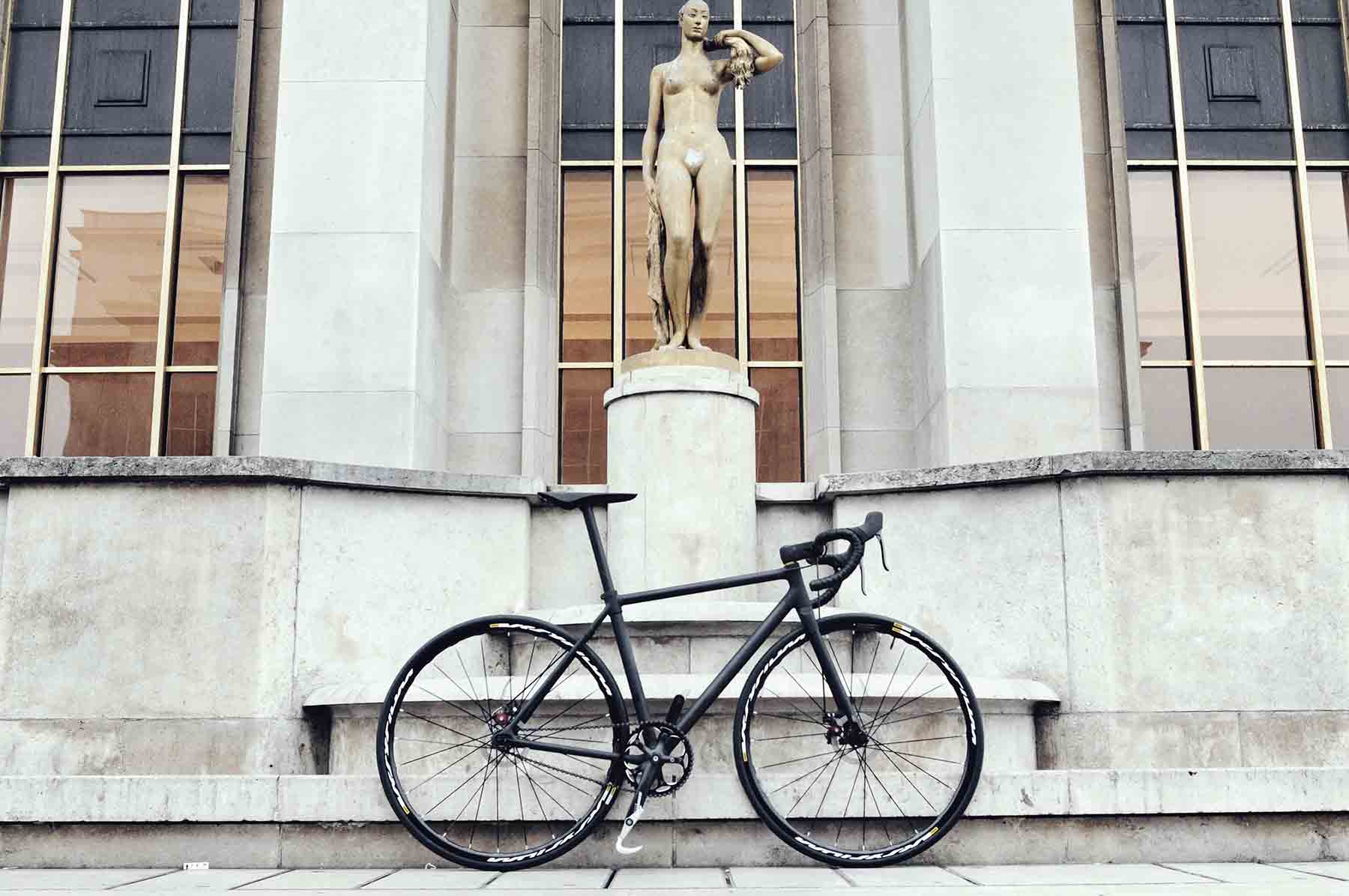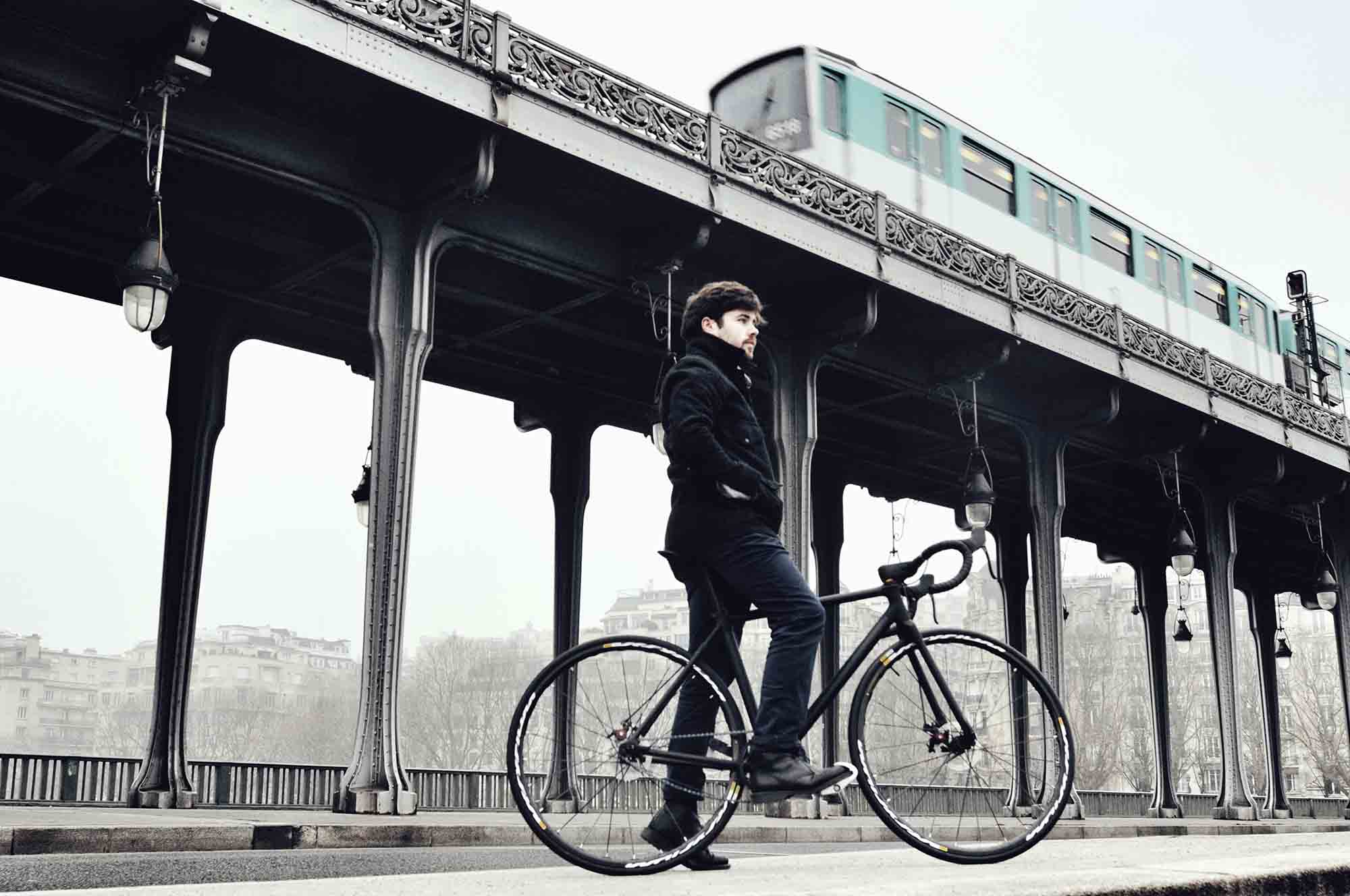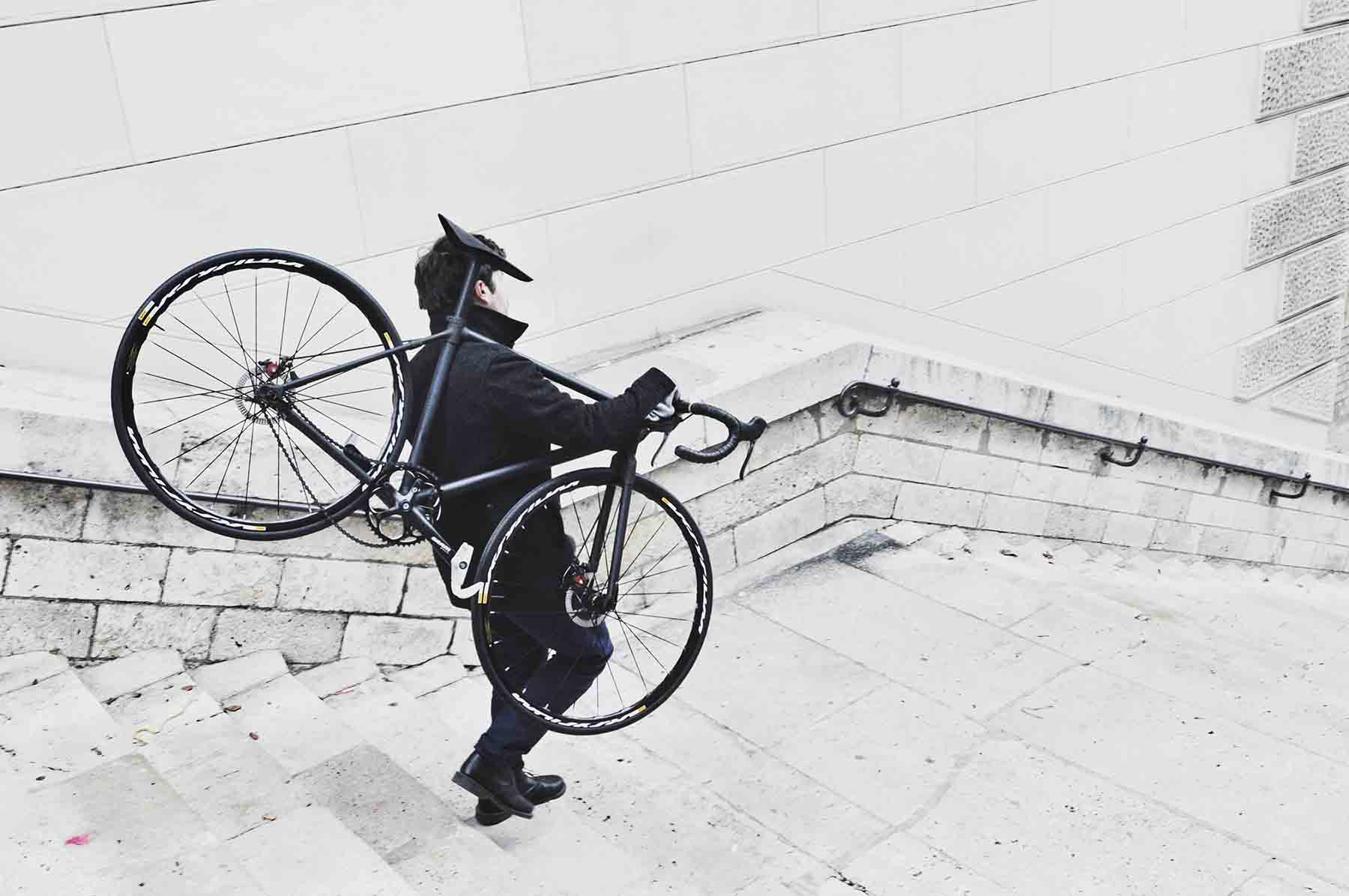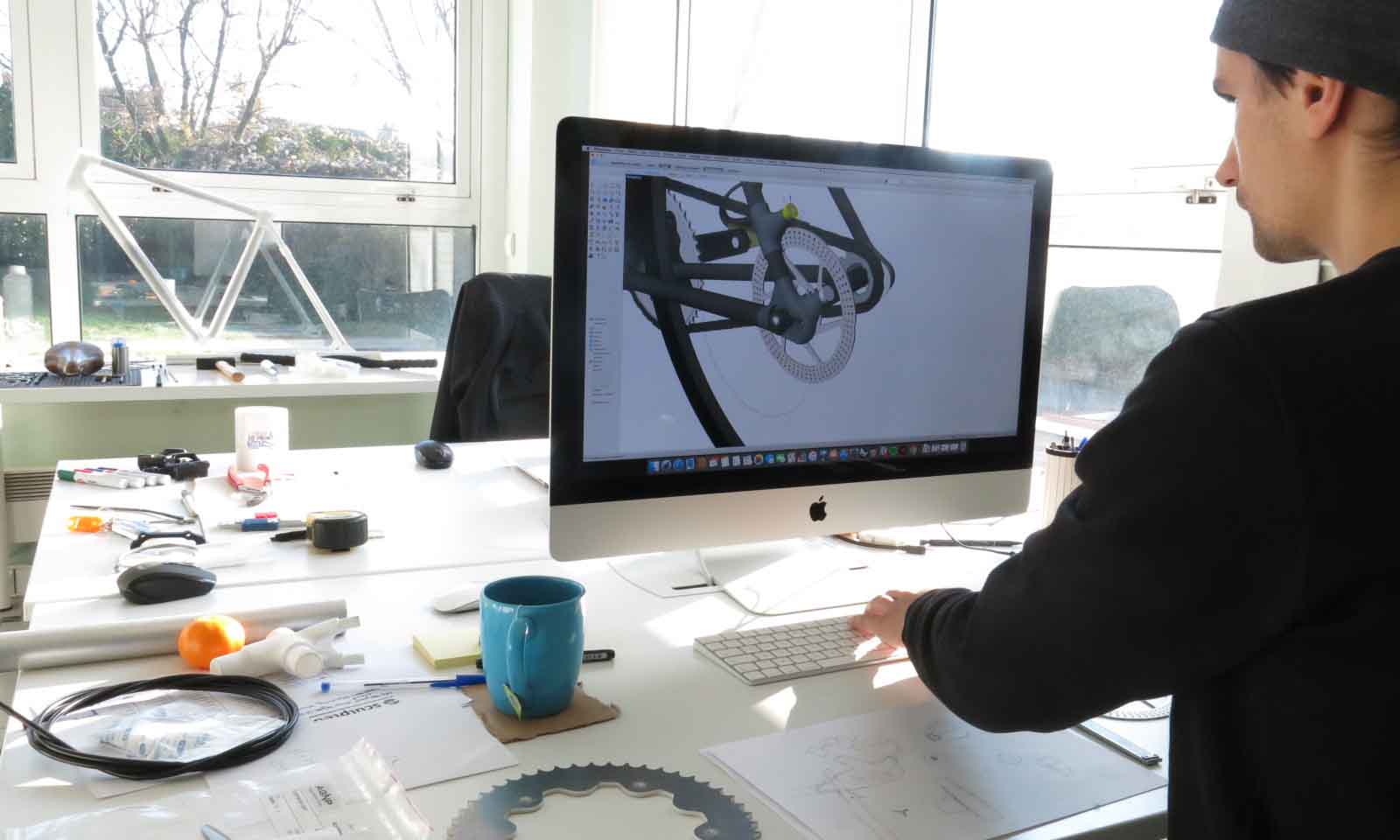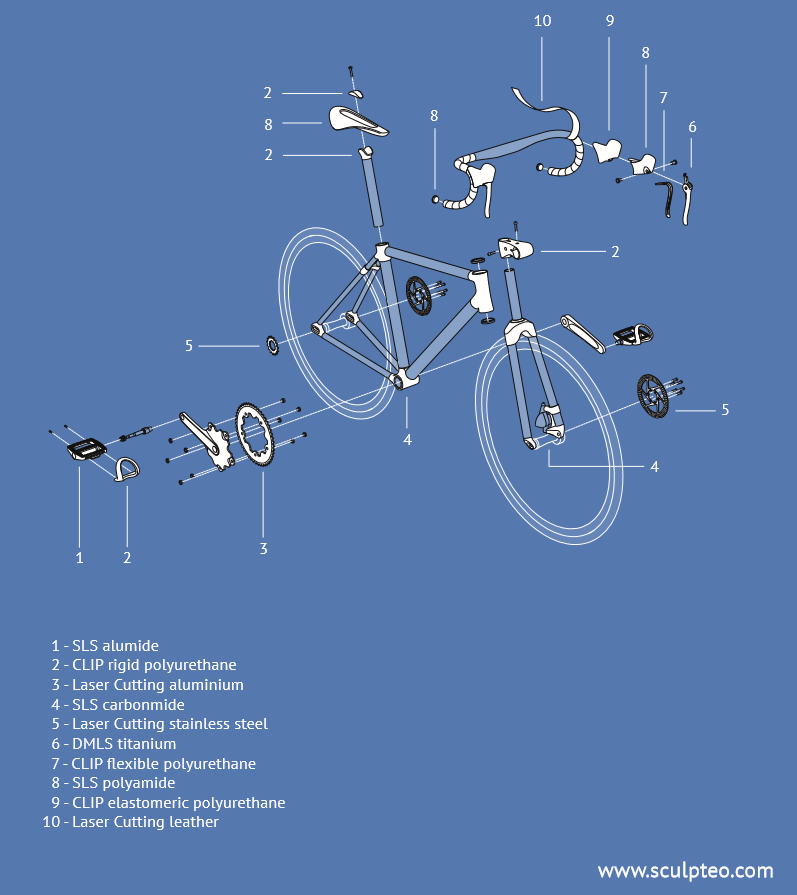Digitally Manufactured Bike going on a 1000km Trip!
Posted By Hannah Bensoussan on Jan 5, 2017 | 0 comments
Sculpteo created a fully functional digitally manufactured bike, and it works! It’s the first time ever that a digitally manufactured bike can actually be ridden, not only used as a demo. It combines all the expertise of our online digital manufacturing service: 3D printing and laser cutting! This bike serves 3 purposes:
- It gathers, in one useful and interesting object, most of our materials and technologies.
- It shows that we do digital manufacturing for real, that allows to create finished, functional objects.
- It is a first presentation of Sculpteo Studio, our new design service that will help in designing digital manufacturing projects: the Sculpteo Bike Project is a way to showcase the talents of our designers.
We’re not a bike company, we’re an engineering company. Our job is to find and solve complex problems for our clients using the best technological choice, and to help them to do it by themselves on our website. This bike is a proof of concept on how our technology can be used, what it can achieve. We asked our design and engineering team to work on the project 7 weeks ago and to demonstrate how digital manufacturing can be used and beneficial.
The project was thought, designed and realized by two of our designers, Alexandre d’Orsetti et Piotr Widelka. The Sculpteo Bike Project was the occasion for them to seek and push back the limits of digital manufacturing, and the explore the potential of the technologies offered by Sculpteo’s online platform.
And there’s more: we’re taking this bike on a 1000km trip across the US, to show that it’s very much a real bike, not just a prototype: after CES, our two designers will ride their Bikes from Las Vegas to San Francisco! You can follow the evolution of the project with the hashtag #SculpteoBikeProject
In this article, our designer Alexandre tells you about the project, from its birth to its soon to start trip, and explains what Sculpteo Studio is.
Part 1: Introducing the Sculpteo Bike Project and the designers
Why choose to digitally manufacture a bike?
Alexandre: We started working on the bike at the beginning of November. We were looking for a project that would allow us to integrate and test a wide range of the materials and processes offered by Sculpteo, in particular the latest ones like metal 3D printing via DMLS, laser cutting or Carbon’s CLIP resin 3D printing. A bike is constituted of an ensemble of peripherics assembled around one structural element, the frame. This diversity of elements, with specific constraints (structure, comfort, settings, etc.) allowed us to split the project into several sub-projects, and to choose, for each one of them, which technology and material would fit best.
What’s the modularity of Digital Manufacturing?
Alexandre: Digital manufacturing and its associated technologies (SLS, DMLS, CLIP, laser cutting, etc…) allow to product finished parts, not only models or prototypes. This means we can work with the materials and their specific characteristics, when conceiving our finished object.
Having a real, finished object in your hands just two days after ordering it gives a great amount of flexibility and allows to go back and forth many times between different iterations until your object fits its final use. The bike we built is meant to keep adapting and improving according to the challenges it will face and the applications that will be made of it, as well as the feedbacks we’ll get about it. Therefore, the Sculpteo Bike Project showcases the modularity allowed by digital manufacturing. In a way, it’s a metaphore of Sculpteo’s services, that continually evolve and move forward.
Who are the two designers behind the project?
Alexandre: Piotr and I are both industrial designers. We met at our design school, the renowned Parisian school l’ENSCI-Les ateliers. We are both very interested in materials and their realisation processes. Piotr was trained in craftsmanship and we both worked at small and large, industrial scales. Whichever the scale at which the designer acts, he or she is always surrounded by people who have a specific knowledge, and specific skills around a material or a process. This is what fascinates us both: the possibility to work closely with these skills, and to imagine new forms and uses, but also new production and distribution scenarios.
Before Sculpteo, we had several occasions to work together. We are both passioned by the outdoor, and we worked with a French brand of outdoor products. We also worked together on experimental and plastic projects, like the realization this year of a trophy for the Education Ministry.
What is Sculpteo Studio?
Alexandre: Sculpteo Studio is a design and conception offer that has just been added to our online digital manufacturing services. Piotr and I are two of the designers of this unit, and we worked on this bike, in part, to showcase our skills and the possibilities that we will offer to our clients projects: Sculpteo Studio will be used to help and accompany the development of 2D and 3D projects… but we’ll tell you more on this topic in 2017!
Part 2: Realization of the project and use of our service
How does a two-people team digitally builds a bike? How did your collaboration work?
Alexandre: Piotr has a good experience with bikes, as he made several already, some of them for his personal daily use. That’s why he was the one to lay down the basics of the frame’s geometry. He has a good knowledge of materials, constraints and bike standards, which are numerous and often quite complex. We allocated the different tasks quite naturally, each of us being in charge of some of the parts, and discussing together the general design of each one. We discussed the characteristics of the part, then we designed it and ordered it, and went back-and-forth several times. It was very interesting to make several steps of the project cohabit. The bike evolves constantly and each part was modified, improved, adapted. Therefore, there were some days when we were gluing a frame, testing another one, designing new parts and adjusting everything while receiving elements of the bike. This gives to the project a sensation of perpetual evolution.
Which technologies did you use?
Alexandre: We used several 3D printing technologies (SLS, DMLS, CLIP), inox, aluminium and leather laser cutting, and CNC for the mounting. DMLS (metal 3D printing) in titanium was really new for us, and we had many interrogations on the results and the design constraints that were linked to this technology. The result was very impressive and it opened up a wide range of new perspectives to have access to finished metal parts! We also used the CLIP technology to 3D print elastomeric materials, which was also an exciting opportunity.
How did you choose which parts to digitally manufacture?
Alexandre: This choice was really keyto the development of the project. We wanted to use digital manufacturing where it made sense for us, which means where it gave a smart and realist solution. We didn’t want the bike to be futurist or sculptural: we wanted a bike that actually works and that represents a sum of our reflexions and experiments, and the potential of each technology.
For the frame, for example, we chose conjoined and glued tubes, fixed by parts that were 3D printed in carbonmide. We outsourced the tubes, because it’s a product that is already economical and simple enough, and available in a wide range of materials and prices. But we chose to digitally manufacturing the joining parts that turn these tubes into a frame because we wanted to be in control of their design, which creates the whole geometry of the frame, and determine how we include the other elements, the settings and the cables.
In the same way, we chose to outsource the cables, the break cases and the clamping bracket.
Part 3: Taking the Sculpteo Bike Project on a 1000km trip across the US!
What’s the future of the Sculpteo Bike Project?
The Bike is now being shown at the CES 2017 in Las Vegas. This is a great step for us and a beautiful occasion to show our skills.
Then, we’ll ride the bike, as much as we can, in various circumstances, the first opportunity will be our big trip from Las Vegas to San Francisco! 1000km on the bike, in different temperatures and altitudes! This will be an occasion to test our parts for real, see which ones work and which ones need improvements. Testing the object in the long run, in difficult conditions, like cold and humidity, will teach us a lot about the resistance of the different materials. I think it will give us many updates ideas. This project is also a tool to communicate about what Sculpteo does, and to inspire our clients and potential clients to create innovating digital manufacturing projects. I hope we’ll have many occasions to talk about it!
According to the feedbacks we get, we’ll probably adapt the bike. Maybe we’ll push further some of the elements further. We’re thinking for example of solutions to make customized frames.
It’s always exciting to test a project we’ve imagined. As I said, it’s a project in perpetual evolution, and I am very eager to improve it. The bike is meant to be taken as an ensemble, an example of the diversity of possibilities offered by digital manufacturing, but also as a sum of independent projects such as the frame, the saddle, etc. I can’t wait to see if some of these elements will develop a life of their own.
We’re very happy to have presented to you the Sculpteo Bike Project, and we hope you’ll follow its evolution with the hashtag #SculpteoBikeProject.
Happy CES 2017!


 Connect with Google
Connect with Google Connect with Facebook
Connect with Facebook
